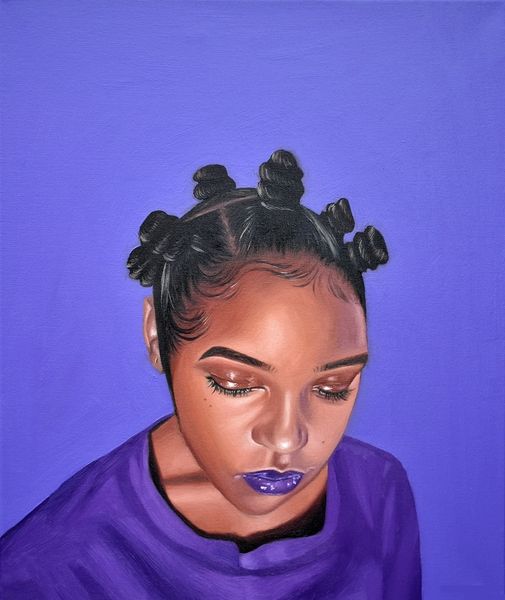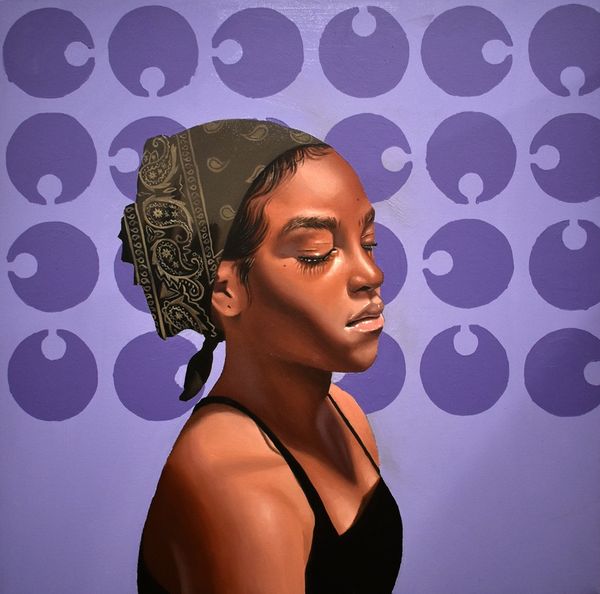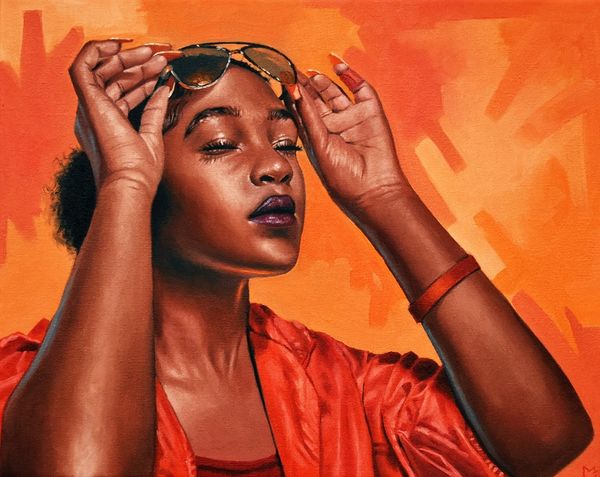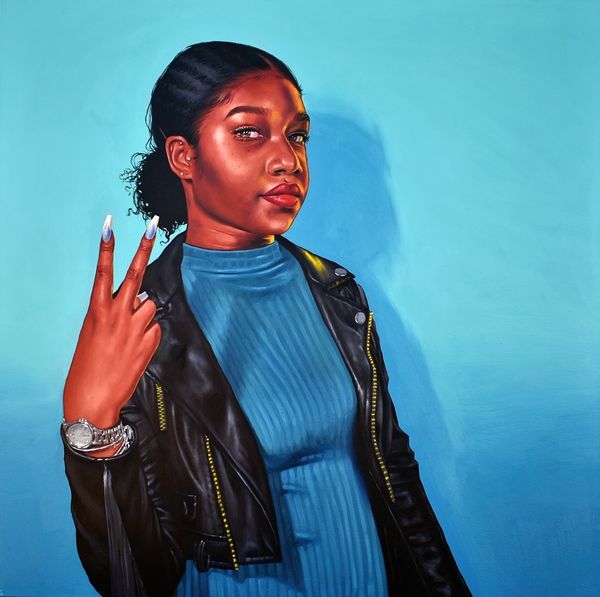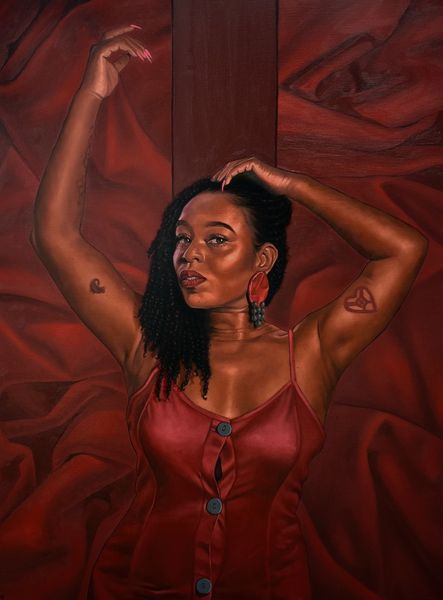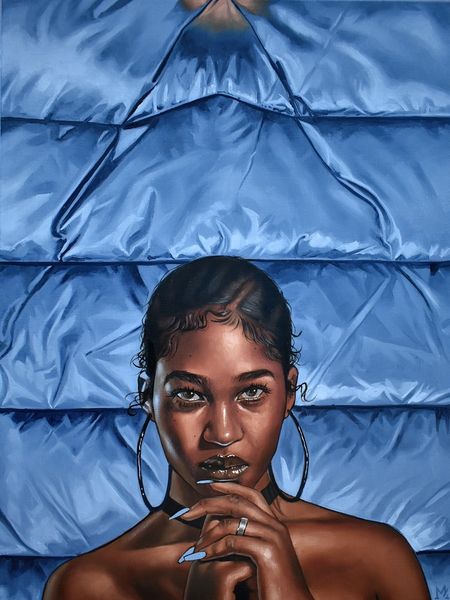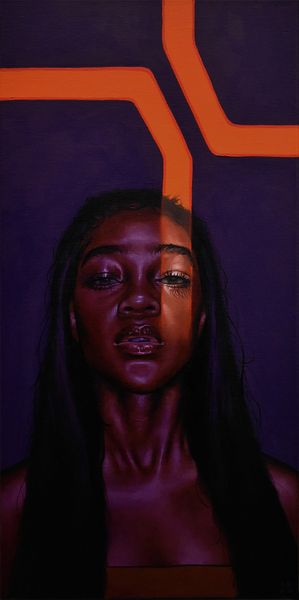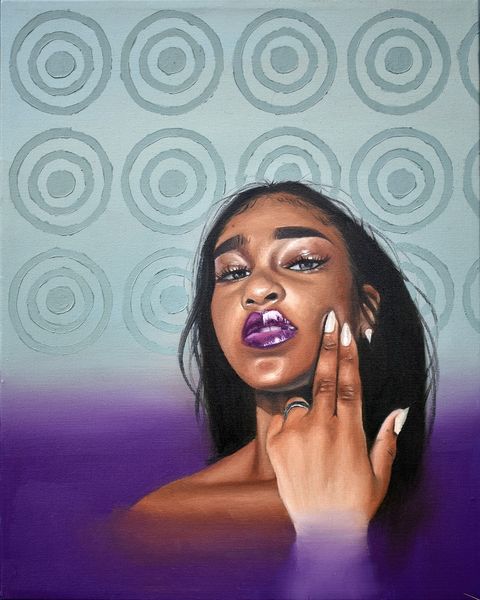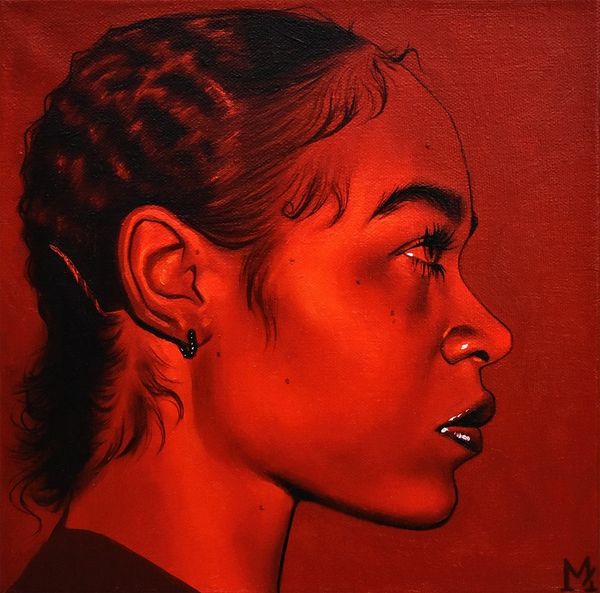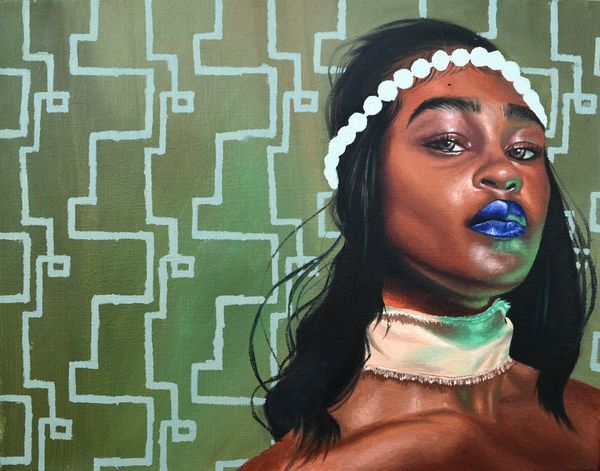
painting, oil-paint
#
portrait
#
figurative
#
contemporary
#
painting
#
oil-paint
#
portrait reference
#
portrait head and shoulder
#
animal portrait
#
animal drawing portrait
#
portrait drawing
#
facial portrait
#
portrait art
#
fine art portrait
#
realism
#
celebrity portrait
#
digital portrait
Copyright: Modern Artists: Artvee
Editor: So, this is "Pink Bomb" by Monica Ikegwu, from 2017, oil on canvas. It's quite striking – a portrait bathed in pink, but the subject's expression is rather serious, almost confrontational. What do you see in this piece, considering its historical context? Curator: Immediately, I'm drawn to the power dynamics inherent in portraiture. Who is given the space and resources to be represented? Historically, portraiture was largely reserved for the elite. Ikegwu's choice to portray a woman of color challenges that established power structure, disrupting the traditionally white, often male, gaze that dominates art history. The 'bomb' in the title makes me consider ideas of explosive presence. How does the artist use the conventions of portraiture to amplify, rather than diminish, the subject's presence? Editor: That's a really interesting point about the title and subverting traditional portraiture. The pink seems so assertive, almost aggressively feminine. Is that playing into or against societal expectations? Curator: It’s a complex interplay. The deliberate use of pink can be seen as reclaiming a color often associated with superficiality and girlishness. Ikegwu uses it to create a bold statement, challenging the way femininity, especially Black femininity, is often dismissed or hypersexualized. Consider how the art world has historically treated women artists and artists of color – often marginalized or pigeonholed. This work makes a very direct statement that can’t be ignored. Editor: So the piece is not just a portrait, but also a commentary on the politics of representation within art itself? Curator: Precisely. By engaging with the historical legacy of portraiture while simultaneously disrupting its established norms, Ikegwu's "Pink Bomb" invites us to critically examine who gets to be seen and how they are portrayed. Editor: This has totally changed how I view portraiture! I will start by observing not just WHAT is depicted, but also WHY and WHO. Thanks! Curator: Exactly, it's crucial to understand how the artist is confronting and challenging cultural norms and histories. A deeper look makes all the difference!
Comments
No comments
Be the first to comment and join the conversation on the ultimate creative platform.

